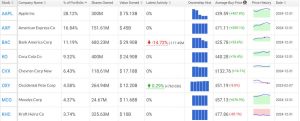Squeezing the highest yield out of my cash is always a priority for me. So when I look at different dividend stocks to consider buying, I like to see how the yield has changed over time. Naturally, my attention was piqued when I saw a stock where the dividend yield has been rapidly rising over the past few years.
Straight to the point
The stock I’m referring to is the SDCL Energy Efficiency Income Trust (LSE:SEIT). It sits in the FTSE 250 and currently has a dividend yield of 9.45%. Over the past year, the stock is down 11%. When I compare the yield to the rest of the index, it’s one of the highest.
I also note that five years ago, the yield was around 1%. So over this time period, it has increased markedly. Given the way the dividend yield is calculated, this is down to a couple of things.
One is the fall in the share price. Over the past five years, the stock is down by 38%. So this drop acts to push up the yield, as the share price is a smaller proportion of the dividend per share that’s paid out.
The other element is the growth in the income payments. Five years back, the dividend per share was just 1p. In the past year there has been a total of 6.24p worth of dividends paid. With a larger amount being paid, the yield increases again.
Risk and reward
Aside from just the numbers, I need to understand if the business is sustainable. The trust owns and manages a diverse portfolio of energy efficiency and distributed energy generation assets. This includes things such as hardware for hospitals right through to large scale data centres.
Through the leasing of such assets, it generates income, which is then paid out as dividends to investors. The value of the overall portfolio is known as the net asset value (NAV), which the share price should closely track over time.
Even though the share price is currently lower than the NAV, it’s true that the value of the portfolio has been steadily falling over recent years. In the latest annual report, higher interest rates and general market uncertainty were blamed. It’s true that higher interest rates makes financing new projects more costly and expensive.
However, the business is well placed for the future in a world where energy transition to cleaner and more efficient sources is being sought. Therefore, I think demand for the projects that SDCL gets involved in will stay high for some time.
Bringing it all together
The rise in the yield is partly due to the higher dividends. But I am concerned about the long-term fall in the share price. If the business struggles going forward, the dividend could be under threat of being cut.
Therefore, I’m happy to target lower risk options (albeit with lower yields) where I think the cash over time could be a safer bet for my portfolio.
This post was originally published on Motley Fool







